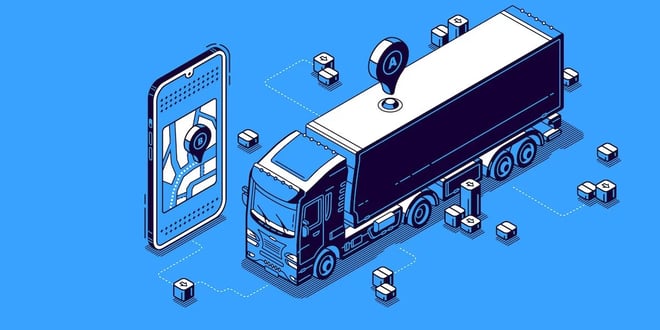Knowing where your assets are and what your drivers are doing can be critical in ensuring efficient fleet operations. But it's not enough for businesses to simply install GPS devices in their trucks—doing so only provides breadcrumbs of data. It’s equally important to have the right GPS mapping software so that fleet managers can gain full visibility into where their delivery vehicles are in real-time.

But the question remains: how exactly will this visibility improve your last mile operations?
How GPS Mapping Software Helps Improve Fleet Operations
Below are a few of the ways companies can use their GPS tracking and mapping to improve their last mile deliveries:
Dispatch and match the right drivers
Having only partial views of your fleet makes the task of dispatching drivers both time-consuming and inefficient. Coordinating pick-ups and drop-offs and balancing them with route changes usually entails multiple phone calls between dispatchers and drivers.
But with GPS, fleet managers can easily track their drivers' location in real-time, allowing them to make informed decisions on which drivers are best suited for a particular task. Thus, when new orders come in that have to be assigned, dispatchers aren’t scrambling to figure out a viable path.
Easily adapt to real-time conditions
There’s a multitude of factors affecting delivery times, such as road conditions, traffic, and weather conditions. GPS real-time tracking empowers fleet managers and dispatchers to know real-time conditions and adjust routes and assignments when the unexpected happens.
Some GPS tracking and mapping solutions offer real-time views on traffic and weather conditions, helping dispatchers determine if drivers are affected and reroute them to safer or faster routes as needed.
Provide real-time tracking abilities to customers
Consumers expectations have changed significantly in the last few years. Now, they demand shorter delivery time-frames, more accurate expected time of arrivals (ETAs), and the ability to track their packages anytime and anywhere. GPS helps companies meet these new customer demands.
The ability to share the location of the drivers with customers via GPS solutions provides them the updates they need. If your customers can track delivery vehicles via their smartphones in real-time, they’ll know when to expect the driver, and they won’t go out for coffee right when the shipment is due to arrive. Not only does this decrease failed deliveries, it also helps companies increase customers' trust in them.
Minimize asset misuse
GPS alone won't necessarily help businesses minimize asset misuse or theft, but combining GPS with geo-fencing helps fleet dispatchers and managers prevent unwanted driving behavior over the course of the last mile.
Setting up geofences allows enterprises to receive alerts if a vehicle is moving outside of the geographic area of established route. Fleet managers can get in touch with drivers to figure out why their assets are where they shouldn't be. This can also come into play in cases where you’re worried about vehicle theft—which can, after all, can be quite costly, especially if there are other assets placed inside the stolen vehicle.
Improve driver safety
GPS tracking along with other solutions such as telematics provides your business with other useful real-time data that speaks to behaviors like harsh braking, overspeeding, cutting and slowing down, harsh cornering, and more.
Giving fleet managers visibility on unsafe driving practices in real-time helps them correct drivers' behavior quickly to prevent accidents from happening. You can also proactively coach drivers and come-up with tailor-made trainings to help drivers improve their driving practices.
Reduce insurance premiums
Ensuring drivers' safety also helps lower insurance premiums. Tracking vehicles and drivers in real-time allows fleet managers to remind drivers of safe driving practices immediately, which can go a long way in preventing accidents. The fewer accidents your fleet is involved in, the lower the insurance premiums you’ll have to pay.
Save costs on fuel
Fuel costs account for a large chunk of a fleet's operating expenses. Luckily, tracking drivers and helping them avoid heavy traffic or poor road conditions can help carriers minimize their fuel costs.
Likewise, monitoring excessive idling, speed, and acceleration are also beneficial in cutting down fuel expenses. These may be small savings, but added up over time they can go a long way in helping lower overall operating costs.
Cut vehicle maintenance expenses and downtime
Keeping vehicles healthy is a must for any fleet, and the easiest way of doing this is by providing vehicles the maintenance they need. GPS systems help by continuously collecting data in real-time. Fleet operators and managers no longer have to track engine hours or mileage manually as they already have GPS solutions to pull real-time usage data.
Fleet managers also have the option of creating preventive maintenance schedules according to engine hours, mileage, or previous breakdown history. Collecting real-time usage data also helps mechanics in spotting and correcting small vehicle maintenance issues ahead of time such as engine faults or low batteries.
GPS solutions also aid drivers encountering vehicle-related issues on the road. Fleet managers can receive alerts when there is a vehicle issue detected, and the real-time tracking will help managers locate the vehicle and send the closest mechanic to resolve the issue.
GPS tracking is a useful tool on its own, as it allows fleet operators and managers to have full visibility on their entire fleet. It’s by combining real-time GPS tracking with other solutions like the best fleet management software for your company, however, that you can really maximize the value of the data you’re collecting. Ultimately, you need a comprehensive overview of everything that’s going on across the last mile—from order creation to driver behavior to customer survey capture—in order to truly succeed at optimization.